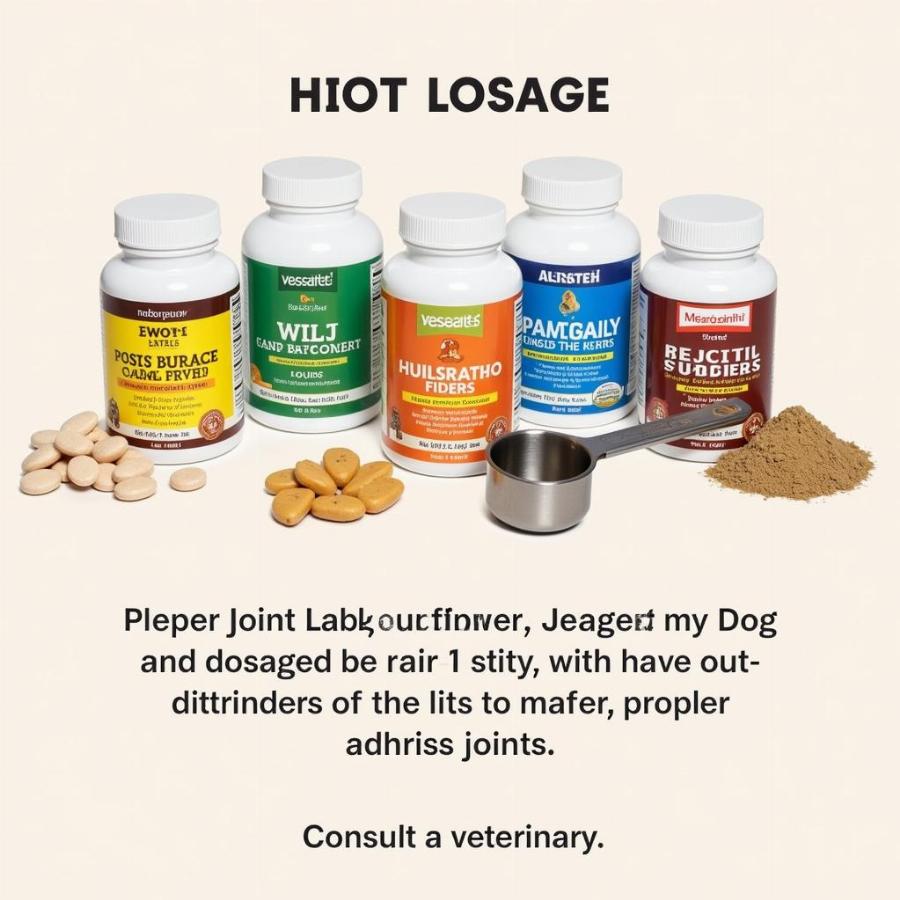The stifle joint – often referred to as the dog’s knee – is a complex structure that plays a crucial role in their agility and mobility. Understanding the anatomy of the stifle, recognizing potential problems, and knowing how to provide proper care can contribute significantly to your furry friend’s overall well-being.
Understanding the Canine Stifle Joint
While we often compare a dog’s stifle to a human knee, the anatomy is actually quite different. Located in the hind leg, the stifle joint connects the femur (thigh bone) to the tibia (shin bone). Unlike our knees, which primarily hinge back and forth, the stifle also allows for a slight rotational movement.
Key components of the stifle joint include:
- Patella: Also known as the kneecap, the patella is a small bone embedded within a tendon that helps to extend the knee joint.
- Ligaments: Strong bands of tissue, the cruciate ligaments (cranial and caudal) within the stifle provide stability and control movement.
- Cartilage: This smooth, slippery tissue cushions the bones within the joint, allowing for frictionless movement.
- Meniscus: A C-shaped piece of cartilage, the meniscus acts as a shock absorber and enhances joint stability.
Common Stifle Problems in Dogs
Just like humans, dogs can experience a variety of stifle joint issues. Some breeds, particularly large and giant breeds, are predisposed to certain conditions. Here are some of the most common stifle problems seen in dogs:
Cranial Cruciate Ligament (CCL) Rupture:
Similar to an ACL tear in humans, a CCL rupture is a common and often debilitating injury. It can occur suddenly during strenuous activity or gradually over time due to degeneration of the ligament.
Signs of a CCL Rupture:
- Sudden lameness in the hind leg
- Holding the leg off the ground
- Swelling around the stifle joint
- Difficulty rising from a sitting or lying position
Patellar Luxation:
This condition occurs when the patella dislocates or slips out of its normal groove. Patellar luxation is more common in small and toy breeds and can range in severity.
Signs of Patellar Luxation:
- Skipping or hopping when walking
- Intermittent lameness
- Holding the leg up and shaking it
- Audible clicking or popping sound in the joint
Arthritis:
Arthritis, also known as degenerative joint disease (DJD), is a progressive condition that affects the cartilage within the stifle joint. It is often a consequence of aging, injury, or developmental abnormalities.
Signs of Arthritis:
- Stiffness, especially after rest
- Lameness
- Reluctance to jump or climb stairs
- Swelling around the joint
Diagnosing Stifle Problems
If you notice any signs of lameness, pain, or discomfort in your dog’s hind leg, it’s essential to seek veterinary attention promptly. Early diagnosis and intervention can significantly improve outcomes and long-term prognosis. Your veterinarian will perform a thorough physical examination, observing your dog’s gait and range of motion. Diagnostic tests, such as X-rays, may be recommended to evaluate the joint and confirm a diagnosis.
Treatment Options for Stifle Conditions
Treatment for stifle problems in dogs varies depending on the specific condition, its severity, and your dog’s overall health. Options may include:
- Medications: Non-steroidal anti-inflammatory drugs (NSAIDs) can help to reduce pain and inflammation. In some cases, other medications, such as joint supplements or pain relievers, may be prescribed.
- Physical Therapy: Physical therapy can be beneficial in managing pain, improving mobility, and strengthening the muscles surrounding the joint.
- Surgery: Surgical intervention is often recommended for CCL ruptures and severe cases of patellar luxation. Various surgical techniques are available, and your veterinarian will discuss the best option for your dog.
- Weight Management: Maintaining a healthy weight is crucial for dogs with stifle problems, as excess weight puts added stress on the joints.
Supporting Your Dog’s Stifle Health
As a responsible dog owner, you play a vital role in supporting your furry companion’s stifle health. Here are some key things you can do:
- Choose the Right Diet: Providing a balanced and nutritious diet tailored to your dog’s breed, age, and activity level can help support joint health.
- Regular Exercise: Engage your dog in regular, moderate-impact exercise to maintain muscle mass and joint flexibility. Avoid high-impact activities, especially for breeds prone to stifle problems.
- Provide Joint Supplements: Talk to your veterinarian about joint supplements containing ingredients like glucosamine and chondroitin, which may help support cartilage health.
- Create a Supportive Environment: Provide your dog with a comfortable bed, non-slip flooring, and ramps or steps to help them navigate stairs or furniture.
 Supplements for Dog Joint Health
Supplements for Dog Joint Health
When to Seek Veterinary Help
Don’t hesitate to contact your veterinarian if your dog exhibits any of the following:
- Limping or lameness, even if it comes and goes
- Difficulty rising, sitting, or lying down
- Swelling around the stifle joint
- Yelping or whining when the joint is touched
- Reluctance to play or exercise
Beaut Dogs: Your Partner in Canine Care
Beaut Dogs is your go-to resource for all things dog-related, providing reliable, practical, and in-depth information about the canine world. From breed-specific insights to expert advice on health, nutrition, training, and care, we’re here to empower dog owners with the knowledge they need to provide the best possible life for their furry friends.
For personalized guidance and support, don’t hesitate to reach out to us at [email protected]. We’re always happy to help you navigate the joys and challenges of dog ownership. Beaut Dogs is committed to your dog’s well-being!